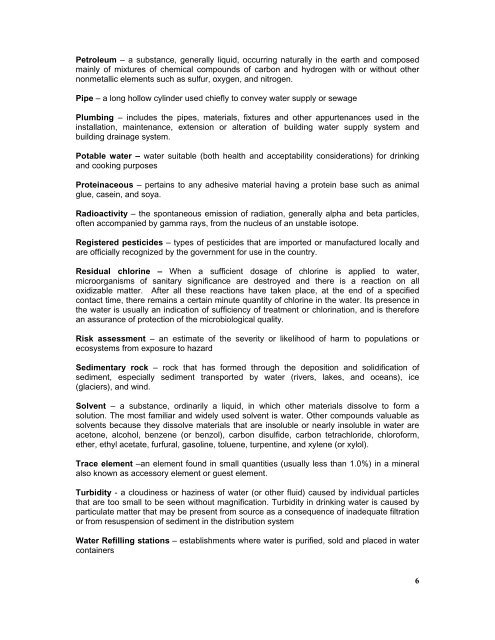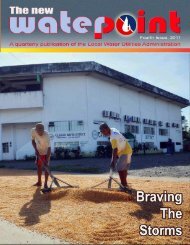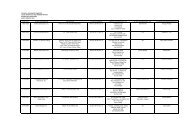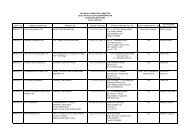Philippine National Standards for Drinking Water - LWUA
Philippine National Standards for Drinking Water - LWUA
Philippine National Standards for Drinking Water - LWUA
You also want an ePaper? Increase the reach of your titles
YUMPU automatically turns print PDFs into web optimized ePapers that Google loves.
Petroleum – a substance, generally liquid, occurring naturally in the earth and composed<br />
mainly of mixtures of chemical compounds of carbon and hydrogen with or without other<br />
nonmetallic elements such as sulfur, oxygen, and nitrogen.<br />
Pipe – a long hollow cylinder used chiefly to convey water supply or sewage<br />
Plumbing – includes the pipes, materials, fixtures and other appurtenances used in the<br />
installation, maintenance, extension or alteration of building water supply system and<br />
building drainage system.<br />
Potable water – water suitable (both health and acceptability considerations) <strong>for</strong> drinking<br />
and cooking purposes<br />
Proteinaceous – pertains to any adhesive material having a protein base such as animal<br />
glue, casein, and soya.<br />
Radioactivity – the spontaneous emission of radiation, generally alpha and beta particles,<br />
often accompanied by gamma rays, from the nucleus of an unstable isotope.<br />
Registered pesticides – types of pesticides that are imported or manufactured locally and<br />
are officially recognized by the government <strong>for</strong> use in the country.<br />
Residual chlorine – When a sufficient dosage of chlorine is applied to water,<br />
microorganisms of sanitary significance are destroyed and there is a reaction on all<br />
oxidizable matter. After all these reactions have taken place, at the end of a specified<br />
contact time, there remains a certain minute quantity of chlorine in the water. Its presence in<br />
the water is usually an indication of sufficiency of treatment or chlorination, and is there<strong>for</strong>e<br />
an assurance of protection of the microbiological quality.<br />
Risk assessment – an estimate of the severity or likelihood of harm to populations or<br />
ecosystems from exposure to hazard<br />
Sedimentary rock – rock that has <strong>for</strong>med through the deposition and solidification of<br />
sediment, especially sediment transported by water (rivers, lakes, and oceans), ice<br />
(glaciers), and wind.<br />
Solvent – a substance, ordinarily a liquid, in which other materials dissolve to <strong>for</strong>m a<br />
solution. The most familiar and widely used solvent is water. Other compounds valuable as<br />
solvents because they dissolve materials that are insoluble or nearly insoluble in water are<br />
acetone, alcohol, benzene (or benzol), carbon disulfide, carbon tetrachloride, chloro<strong>for</strong>m,<br />
ether, ethyl acetate, furfural, gasoline, toluene, turpentine, and xylene (or xylol).<br />
Trace element –an element found in small quantities (usually less than 1.0%) in a mineral<br />
also known as accessory element or guest element.<br />
Turbidity - a cloudiness or haziness of water (or other fluid) caused by individual particles<br />
that are too small to be seen without magnification. Turbidity in drinking water is caused by<br />
particulate matter that may be present from source as a consequence of inadequate filtration<br />
or from resuspension of sediment in the distribution system<br />
<strong>Water</strong> Refilling stations – establishments where water is purified, sold and placed in water<br />
containers<br />
6







